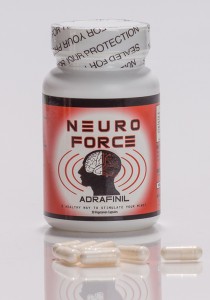Modafinil: Usage, Effects and a Similar Compound
Modafinil is a psychoactive drug belonging to the psychostimulant category. A group of scientists in France discovered modafinil and its related compound Adrafinil in 1970 (Li & Johnson, 2010). Modafinil is often used as a wakefulness-promoting drug, which was commercially introduced in the year 1994 in France under the brand-name Modiodal and in 1998 by the USA by the name ProVigil. Chemically, Modafinil is made up of R and S-enantiomers. The R-enantiomer has a long-lasting waking effect as it is removed from the system three times slower than the S-enantiomer. Armodafinil is the commercially available R-enantiomer that is known by the brand-name Nuvigil. Modafinil is chemically named as 2-[(diphenylmethyl) sulfinyl] acetamide. Both drugs let the patient sleep at will, unlike a majority of other stimulants (Kim, 2012).
Mechanism of action of modafinil
The waking effect of modafinil has not yet been elucidated; however, there are many theories that have been proposed for the same. Modafinil is thought to induce wakefulness through the alpha-adrenergic receptors present in the brain where it inhibits the reuptake of noradrenaline, increases the release of cortical serotonin and decreases γ-amino butyric acid (GABA) transmission thereby increasing the excitatory glutamatergic signaling. Modafinil increases release of glutamate and histamine, and experiments show that this mechanism requires orexin and orexinergic transmission. Based off multiple studies it is possible to come to the conclusion that Modafinil has multiple binding sites within the brain.
Uses of modafinil
Modafinil is also used as a mood-enhancing and wakefulness promoting drug. Modafinil is prescribed to patients with conditions such as narcolepsy and sleep apnea. Modafinil has also found use among students who use this drug to keep awake and enhance memory. The most basic purpose of modafinil is to increase concentration. It is prescribed for shift workers sleep disorder (SWSD), idiopathic hypersomnia, sleep apnea related daytime sleeping, to alleviate jet lag and to aid in reducing post anesthetic grogginess. Modafinil has been reported to be used by athletes, journalists and people with high job demands. Armodafinil is used as adjuvant therapy for sleep disorders (Savulescu, Meulen & Kahane, 2011). Modafinil has no significant addiction potential as it provides no sense of euphoria after ingestion (Krueger et al., 2011).
Recommended usage and dosage of modafinil
Modafinil is primarily prescribed as a single-dose drug, where a typical dose is between 100 to 400 mg. In the US, modafinil is available as 100 mg and 200 mg tablets taken as a single dose in the morning for narcolepsy. Some studies suggest that a 200 mg dose and a 400 mg dose elicit the same therapeutic effect and that the recommended dosage should be lowered to 200 mg. The drug takes 2 to 4 hours to reach maximum potential with a half-life of 10 to 15 hours. It is suggested from a study that at around 4 hours after ingestion that the cognition enhancing property peaks. Sustainable pharmacokinetic steady state occurs within seven days of continuous dosing. The steady state is attained within a week, irrespective of the dosage. When compared to modafinil, half the quantity of Armodafinil produces the same. Modafinil is contraindicated in patients with kidney problems (Kumar, 2008).
Short term, long-term effects and side effects of modafinil
Modafinil’s pharmacological mechanism has not been elucidated, which makes it difficult to assess its long-term effect on healthy people. However, it is apparent that over a short period of time, modafinil can act as a mood elevator, increase concentration and promote a wakeful and alert feeling. In the short-term, it causes headache, diarrhea and nausea. In the long-term, it could cause reduced brain development in children who take the drug for ADHD (Savulescu et al., 2011). Pharmacologically- induced sleep deprivation could lead to blood infiltration of gut bacteria (Kim, 2012).
Legal status of modafinil
The United States has categorized Modafinil as a non-narcotic Schedule IV controlled substance. Due tothis classification, it is required for an individual tohave a prescription from a physician inorder to be in possesion of or to use Modafinil, doing so without one could incriminal charges. According tothe US Food and Drug Administration (US FDA), Modafinil is approved for treating narcolepsy, obstructive sleep apnea, SWSD, Parkinson’s disease, myotonic dystrophy, ADHD, bipolar disorder, chronic fatigue syndrome and sleep deprived emergency-room physicians are investigational innature (Kumar, 2008).
A compound similar to modafinil
Modafinil is the primary metabolite of Adrafinil and is effective in much lower doses when compared to Adrafinil. As Adrafinil metabolizes within the human body, it creates modafinil. Chemically, Adrafinil contains a-NHOH side chain while modafinil contains a –NH2 side chain with no difference in the rest of the structure (Li & Johnson, 2010).
Conclusion
Even though studies suggest that modafinil has no apparent addiction potential, the hypervigilance promoted by the drug through dopamine increase could have abuse potential. There is a dire need to assess the short term and long-term effects of continued usage of modafinil in all age groups. A complete psychoneuroimmunological work up of the drug needs to be investigated for uncovering potential unknown side effects.
References
Kim, D. (2012). Practical use and risk of modafinil, a novel waking drug. Environmental health and toxicology, 27.Kumar, R. (2008). Approved and investigational uses of modafinil. Drugs, 68(13), 1803-1839.
Krueger, G, Leaman, H, Bergoffen, G, Murray, D & Pickett, R. (2011). Effects of psychoactive chemicals on commercial driver health and performance: Stimulants, hypnotics, nutritional, and other supplements. Washington, D.C.: Transportation Research Board.
Li, J., & Johnson, D. (2010). Modern drug synthesis. Hoboken, NJ: Wiley.
Savulescu, J., Ter Meulen, R., & Kahane, G. (2011). Enhancing human capacities. Chichester, West Sussex, U.K.: Wiley-Blackwell.

